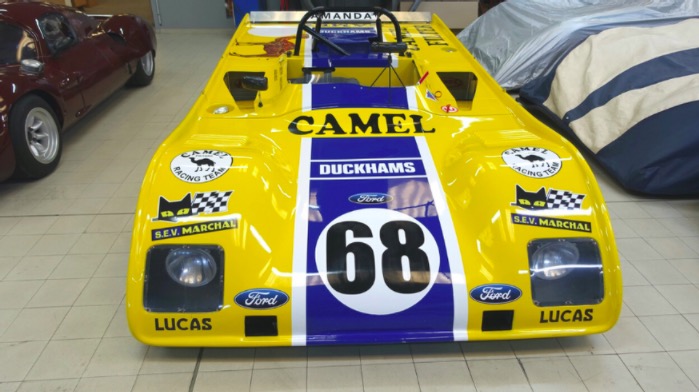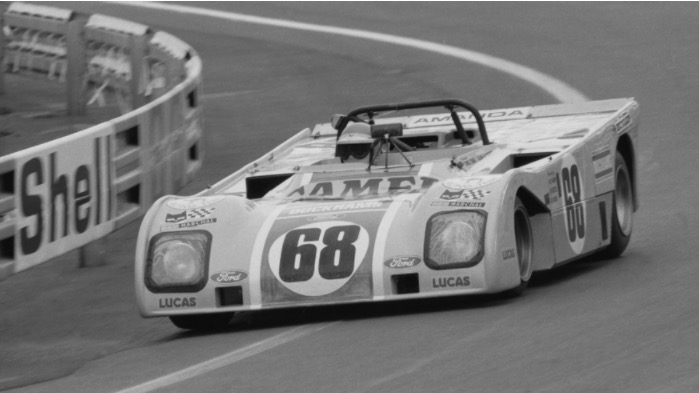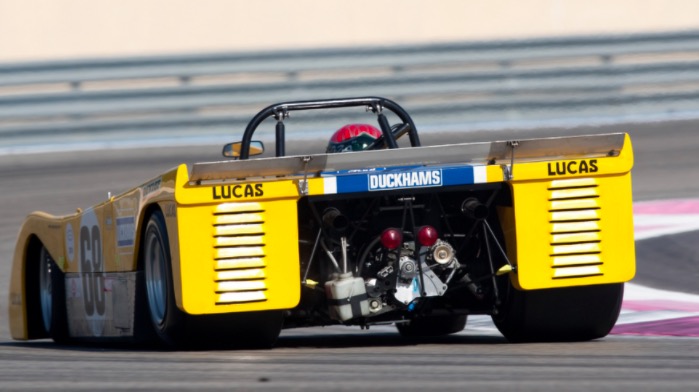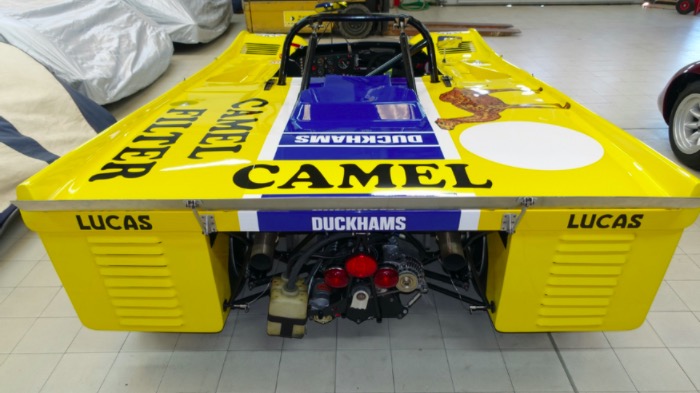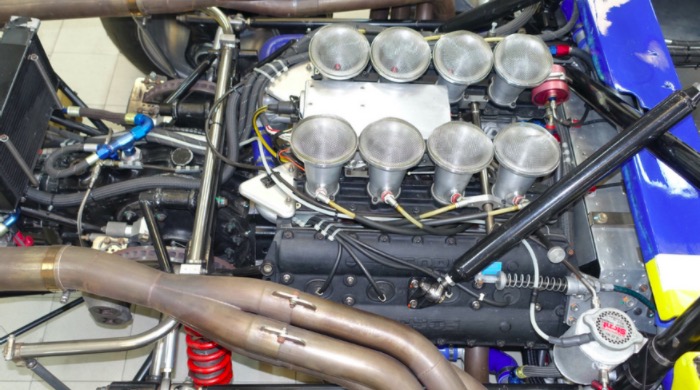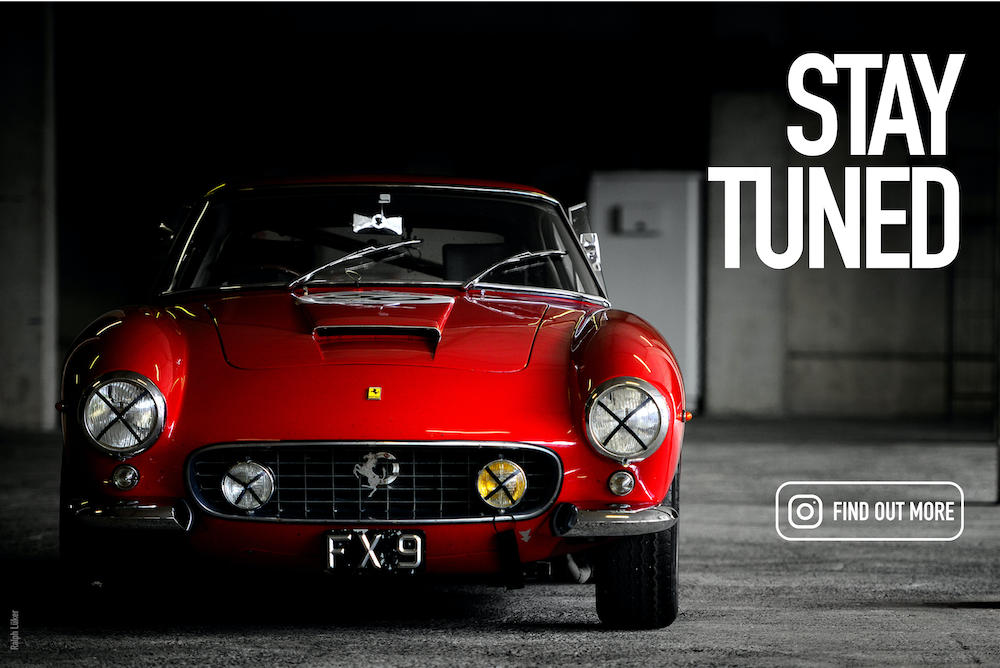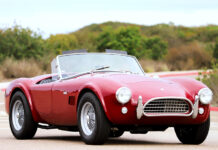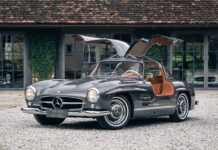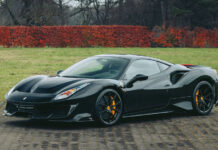The Duckhams LM was the first prototype created by Gordon Murray! A model unique in the world, entered for the 1972, 1973 and 1974 editions of the 24 Hours of Le Mans! A competitive car, eligible for the Le Mans Classic!
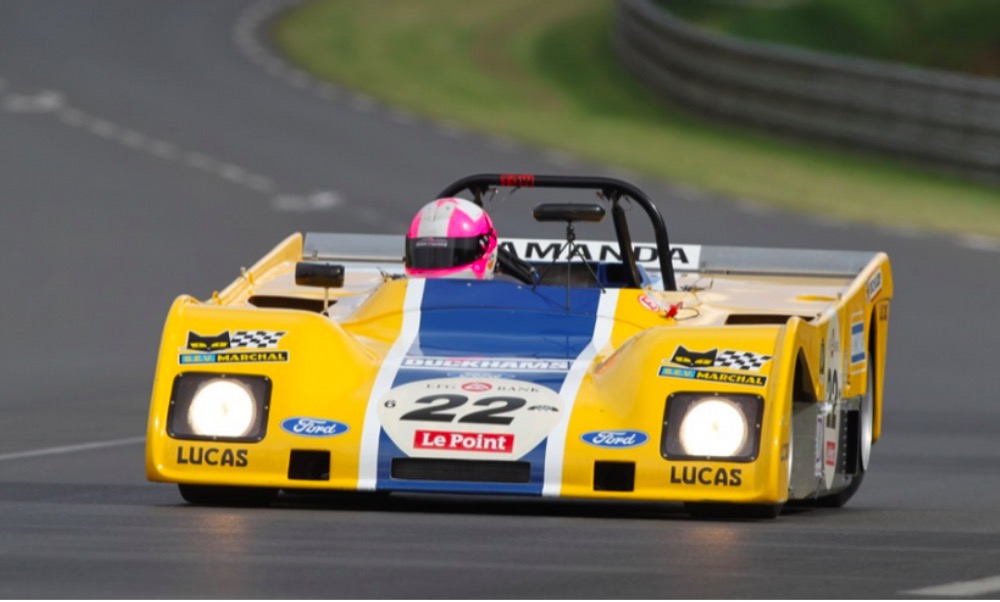
In 1972, the 24 Hours of Le Mans was marked by a very strong French presence, crowned with success through the domination of the Matra Simca Shell team, and the victory of the Graham Hill/ Henri Pescarolo pairing ahead of François Cevert and Howden Ganley. While Porsche managed to place a 908 LH on the bottom step of the podium (with Reinhold Joest/ Michel Weber/ Mario Casoni), the opposition from England was also very strong. The Duckhams Oil Motor Racing team, with the Duckhams LM now being offered for sale by Ascott Collection, was ranked among the outsiders. This car is exceptional for several reasons: it boasts three participations in the 24 Hours of Le Mans (from 1972 to 1974), was a unique creation (with a single chassis assembled at the time) and was the work of a true genius, Gordon Murray.
Alain de Cadenet and Gordon Murray: a telling encounter
Alain de Cadenet’s debut participation at the 24 Hours of Le Mans in 1971 with the Ecurie Francorchamps team, driving a Ferrari 512 M, turned out to be a memorable experience. Due to an accident with a Lola during the Targa Florio less than a month before Le Mans, he had momentarily lost part of the vision in his left eye. But he went away having fallen in love with the event, and vowing to come back as a winner…
The regulation changed at the time, imposing new sports models with a limitation on engine sizes. In Group 5, the limit was set at 3,000 cm3. To win the general classification required having a prototype that met this condition. The Porsche 917 and Ferrari 512, which some private teams were using, had become obsolete. Alain de Cadenet then had the idea of switching to the “little” Ferrari, the 312PB. “Ferrari was using the 312PB, which I consider to be one of their most beautiful creations, like a small go-kart derived from Formula 1”, explained Alain de Cadenet. “I went to the factory to see if it was possible to drive one, and I was told that they’d never sell them to private teams because they were “too difficult to drive”. I was furious because I considered myself perfectly capable of driving them.” Having failed to sell the F1 Brabham BT33 he’d purchased earlier, and unable to buy or rent a Ferrari 312PB, he had to find another solution.
Out of sheer rage, Alain de Cadenet had the idea of building a prototype of his own. As the owner of a Formula 1 BT33, he had “connections” with the firm Motor Racing Developments Ltd. (MRD), which assembled the Brabhams. A certain Gordon Murray had been a designer for them for a few years (before becoming chief engineer and technical director of the Brabham F1 programme in 1973). Alain de Cadenet was impressed by Gordon Murray, describing him as a young man who “had this innate gift of describing technical details in simple terms.” So what if Gordon Murray were the man for the job? “I asked him: Do you think you could design a two-seater chassis that looks a bit like a Ferrari 312PB, that I can fit my Brabham bits to? And that’s exactly what he did.” The work was done at night, outside of Murray’s working hours, since the boss, Bernie Ecclestone, didn’t approve of the project.
The birth of the Duckhams LM
To describe the Duckhams LM as a mere clone of the Ferrari 312PB would be both false and unfair. While it was indeed the Italian car that was the logical inspiration for it, the Duckhams LM3 (3 as in “three” litres), had its own characteristics.
As already said, the Duckhams LM was designed to enable the use of certain Brabham parts owned by de Cadenet. Gordon Murray designed a monocoque that could be fitted with the spare suspension from the F1 Brabham. Made of riveted aluminium, it was fitted with the BT33’s rolling gear. The fiber body was made by ProToCo.
Another requirement, to save time and facilitate supplies, was to use mainly English parts. The Duckhams LM became a nearly 100% English prototype: the engine was an ex-McLaren Cosworth DFV, used in F1 at the Belgian Grand Prix. It had given Bruce McLaren his sole F1 win of the season (and his last in F1), with the McLaren M7A. It delivered 400 horsepower at 9,000 rpm and 395 horsepower at 8,500 rpm.
The engine was coupled to a Hewland DG 300 gearbox. For the brakes, de Cadenet chose AP Racing. All the work was done in record time – about six to eight weeks. Everything was done in a garage in Petersham Mews, in the South Kensington district of London.
Several sources estimate a total project cost of £7,000 at the time, including £250 for the work done by Gordon Murray. Alain de Cadenet secured funding partly via the Camel tobacco company, but especially from the Duckhams oil manufacturer. It was this brand that gave the car its name – a practice that was subsequently to become widespread (Mirage Gulf, Inaltera, etc.).
The Duckhams LM at home at Le Mans
With its English DNA but commissioned by Alain de Cadenet with his French origins, the Duckhams LM was predestined to race at Le Mans. Absent from the initial entry list, it was placed on the list of reserve cars, in the prototype category. Alain de Cadenet ended up by getting the green light.
Before being unveiled for the technical verifications, its testing programme was very limited. The car did around twenty laps on the Silverstone circuit in the hands of Chris Craft, on the Monday just before Le Mans. It may be assumed that the trip there – on the M4 motorway – was used to test the car, along with a few outings in the countryside around Le Mans.
The technical commissioners validated the car. Its first race was a truly excellent performance for such a young car: the throttle control was giving some signs of weakness, and then the front bonnet came off at the Arnage bend, after Chris Craft skidded off the track in pouring rain. At the time, the car was in a very good 5th place in the general standings. Following a 1 h 10 minutes pit-stop for repairs, the Duckhams LM crossed the finishing line in 12th position. But mechanically, it had had absolutely no problems – proving that the car was a true thoroughbred!
In 1973, the Duckhams LM returned to Le Mans with a modified body, a longer rear bonnet and a new rear spoiler. It was the “Long tail” version of the 1972 car. Again racing in Duckhams Oil Motor Racing colours, Alain de Cadenet and Chris Craft failed to see the finishing line. They broke the suspension in the 13th hour of the race.
After being given a new body in 1974, the car was rechristened the De Cadenet LM. This time the long tail was abandoned and a prominent rear aileron was mounted on two struts.
For its third consecutive participation in the 24 Hours of Le Mans, the car was driven by Chris Craft and John Nicholson, with Alain de Cadenet being entered but not racing. His role was to qualify the car and take the wheel, if needed, as a “reserve driver”. A suspension failure at the 15th hour of the race prevented the team from crossing the finishing line.
This third participation of the Duckhams LM allowed the car to become the very first to be entered as a De Cadenet, with the driver himself becoming a constructor and entering cars derived from Lola, before stepping up with a genuinely “personal” creation in 1977.
Gordon Murray’s first creation
Paradoxically, while the Duckhams LM impressed the observers and achieved success in its first participation at Le Mans, this wasn’t the case for Ferrari. The Italian firm, which had politely turned Alain de Cadenet down when he’d tried to hire a 312PB, didn’t even show up. Due to weaknesses in the transmission and excessive oil consumption (over 40 litres of oil for Jacky Ickx and Mario Andretti at the 12 Hours of Sebring), Ferrari decided not to confront Matra head-on in a 24 hours race…
“It was this car that started my career,” Gordon Murray said of the Duckhams LM. A career that was to be marked by the legendary McLaren F1, whose race version – the F1 GTR – won the 24 Hours of Le Mans in 1995.
Ascott Collection is now proud to offer for sale a car that is steeped in history and unique in the world, and is very competitive on the historic racing scene, especially at the Le Mans Classic. The car is presented here in its 1972 configuration, with the 1973 and 1974 bodies included in the package of spare parts.
Gordon Murray has issued the car’s current owner with a certificate of authenticity.
Click here for further information

